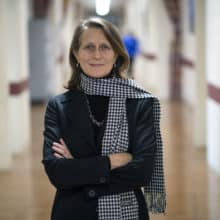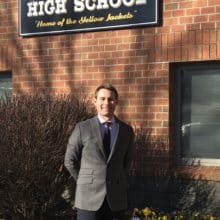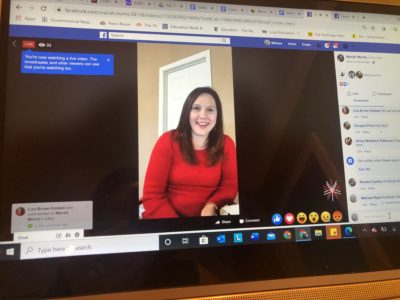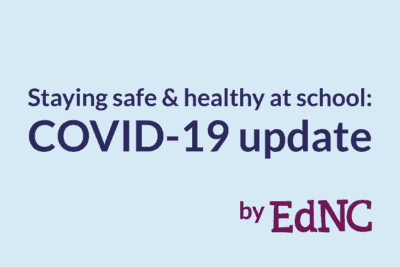
As all of us try to determine what our best contribution might be during the COVID-19 pandemic, what can North Carolina’s teachers do if our students can’t come to school? Ask Mariah Morris, North Carolina’s 2019 Teacher of the Year. Besides all of the advocacy work she does, besides creating and sending numerous informative messages through social media outlets, and besides participating in advisory meetings with the state school board, Mariah is also trying to help other teachers figure out our role as educational professionals during an unprecedentedly disruptive situation in United States education.
On the Sunday afternoon following Gov. Roy Cooper closing all North Carolina public schools, she gathered the regional teachers of the year from 2019 through 2020 for a virtual meeting in which we put our student-centered minds together to share ideas regarding what we might do to help as a group. We gathered individually in front of our computer or smartphone screens, some of us with small children in the background, or with unmade beds and unfolded laundry reminding everyone that our meeting was in addition to family life, and we discussed the events that were transpiring before listening to Mariah’s description of what we were being asked to do.
To create context, we spent time talking about the actions that each of our regions is planning in order to meet student needs. The list is extensive, but among the most vital actions taken are that schools all around the state will still provide meals through cafeteria pickups and bus delivery to bus stops and community centers; that computers — and hot spots if needed — will be made available for students to use at home; that virtual lessons will be created and distributed per district suggestions and requirements; and, most importantly, that teachers and administrators will continue, as events develop, to seek and find alternative ways to serve those around whom our work is centered: North Carolina’s children.
The meeting progressed with Mariah asking people to volunteer to help during her planned Facebook live address to families and educators. While we discussed what each of our region’s school district’s needs were, Mariah took notes and asked questions that might inform her next meeting as well as the live address she was preparing. Participation was enthusiastic, with little hesitation between requests and someone stepping forward, whether the request was for creating virtual repositories for ideas, helping field questions in virtual meetings, or documenting what was happening.
The meeting concluded with almost every one of the 18 teachers involved offering to perform several duties in addition to what our own families, our own commitments to church and volunteer organizations, and our own schools require of us. Our most immediate task is to create content-specific, 30-minute teaching videos that anyone — whether it is a parent, child, or another teacher — can access and use, with the first one being made available Tuesday morning.
And at this moment, as principals and superintendents meet, parents and children wonder what’s next for our public schools, and scientists and medical personnel work to “flatten the curve,” North Carolina’s teachers are doing as we always do for the children of our state: We’re putting our best foot forward even as we march into uncharted territory, and we’re doing it together.






